There are certain moments Nik Nikic cherishes with his son. Often, they’re traveling. At an airport, perhaps. The two might be at their gate waiting to board a plane when a stranger will engage them. Nik quietly watches the interaction play out while sitting next to Chris. He’s focused on the stranger as his son answers each question with his deep, hallowed voice. His Down syndrome accent, Nik calls it.
How old are you? they’ll ask.
Twenty-three, Chris will say.
Where are you going?
To Arkansas, Chris might say.
Nik has seen enough of these conversations to know that they’re almost humoring Chris with their simple questions. Maybe it’s because of his accent. Or it might be because of his appearance with his almond-shaped eyes that hide behind a pair of glasses that rest on the small bridge of his nose. But Nik knows at some point the conversation shifts. It always does.
What’s in Arkansas? they’ll ask.
I’m speaking to the leaders of Wal-Mart, Chris tells them.
I’m a public speaker.
Nik watches as Chris catches their attention.
I’ve completed two Ironmans…
I’m running all six major global marathons…
I’m a world record holder…
Suddenly, Chris isn’t just someone with Down syndrome they’re speaking to while passing time at the airport. He’s now a 23-year-old man who’s breaking boundaries of what people think a person with Down syndrome can do. It’s that shift that Nik cherishes. And that’s when the real conversation begins.
Before Chris was even born, doctors were telling his parents he would never be able to tie his shoes. He wouldn’t finish school or ever have a job. A doctor spotted two holes in his heart during a 20-week ultrasound, an early indication that he may have Down syndrome, a condition that causes significant physical and developmental delays. It affects about 1 in 6,000 babies each year in the United States. If they carried through with the pregnancy, doctors warned, they should prepare to care for him for the rest of their lives.
“You’re devastated because all of your dreams and hopes for him are shattered,” Nik recalls.
After 10 years of trying for a second child — including two miscarriages — Nik and Patty were elated learning they’d welcome a baby boy. But Little League games were replaced with surgeries and therapies. Patty dedicated herself to caring for Chris full-time. At five months old, he underwent open-heart surgery to repair those two holes. He didn’t walk until he was 4 years old. He was tongue-tied, which delayed his speech, and required another surgery. Teachers said he couldn’t grasp their lessons. They were told Chris had to sit at the front of the class while the other kids played. They were constantly fighting with principals and administrators. Chris transferred in and out of five schools in seven years. He had few friends. He was rarely invited to birthday parties. All he wanted was to be included.
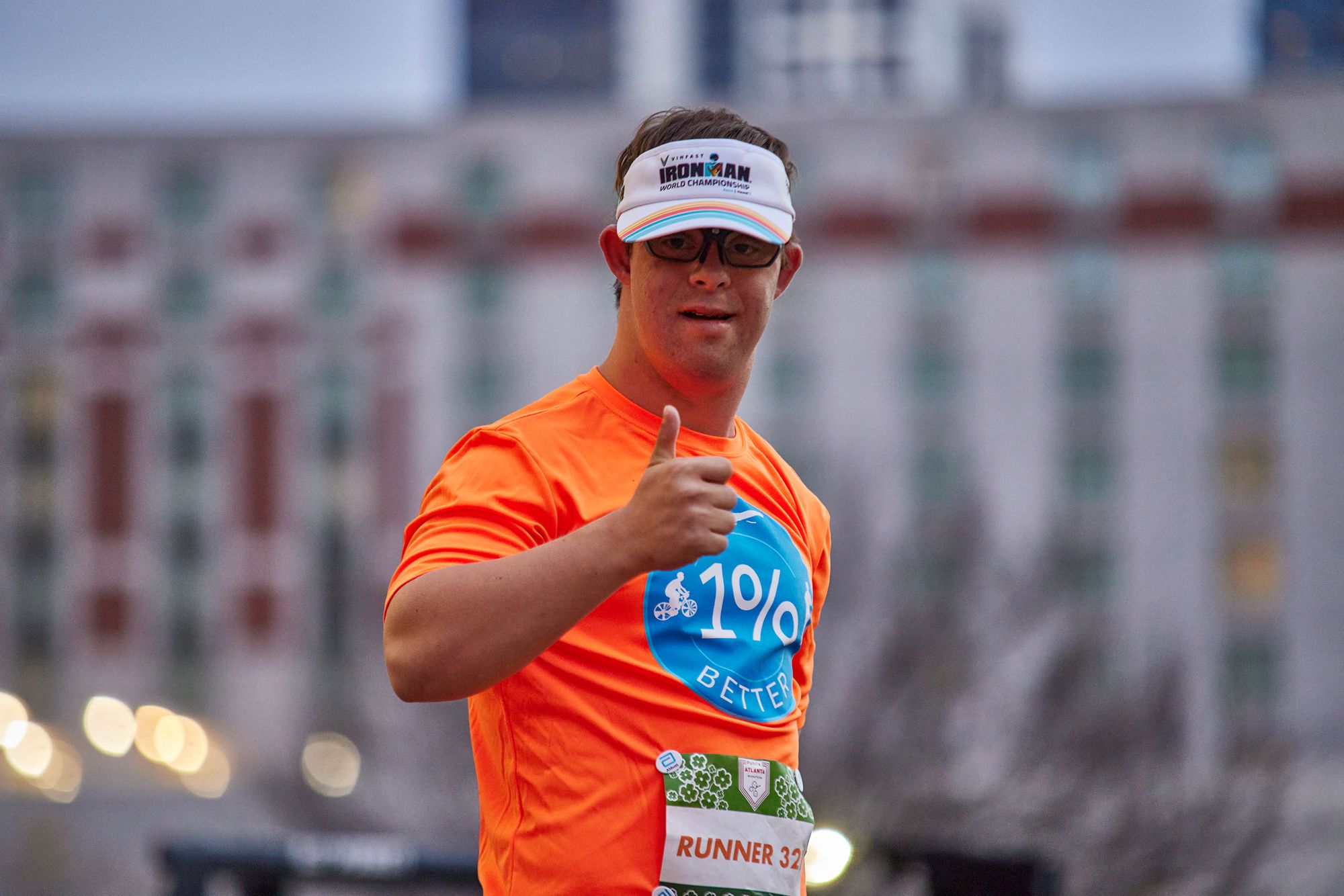
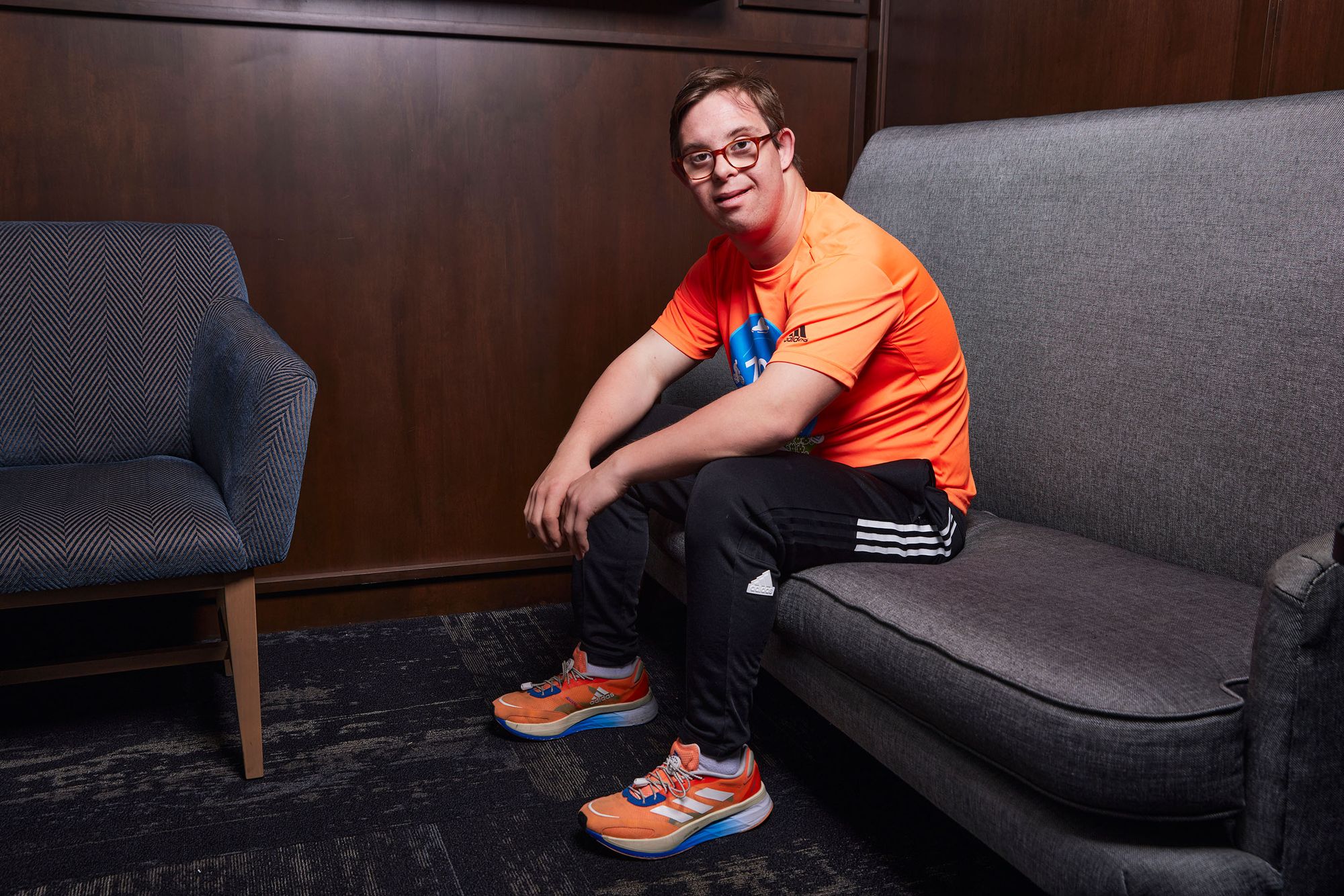
Chris Nikic just wanted to fit in. Now an elite athlete, he's an inspiration for many. [Matt Odom photos]
Nik and Patty believed Chris could do so much more, but the constant negativity that people projected on their son engulfed them, casting doubt that he could ever live a normal life. Chris’ own grandparents told Patty “I’m so sorry” when they learned that Chris had Down syndrome.
Chris’ playful spirit and beaming smile were the spark that kept them fighting. By age 9, Chris joined Special Olympics and found a love for basketball and golf. Nik and Patty also found a pack of parents who understood their struggles in a way the rest of the world didn’t. Finally, it was like taking a breath of fresh air after years of screaming into an endless void.
But even with Special Olympics, Nik and Patty found there were still barriers in the beliefs of what Chris could and couldn’t do. It wasn’t until he was 18 that Chris was invited to join a pilot program with three other Special Olympians to train for a sprint triathlon. The condensed version of the race includes a half-mile swim, a 12.4-mile bike ride, and a 3.1-mile run.
The program gave him purpose. But more than that, for one of the first times in his life, he felt included. He admittedly wasn’t a good athlete in the beginning. He was over 200 pounds, he couldn’t run a mile, and his Down syndrome affected his balance, which caused him to struggle on a bike. He finished last in every competition in which he competed, but Patty and Nik saw their son blossom with every mile run and laugh shared with his new friends. That’s when Nik had an idea.
Hey, Chris, do you want to train for an Ironman?
The negativity once again flooded in.
Are you crazy, Nik? He’ll never finish!
Nik, isn’t that dangerous? What if he gets hurt? What if he fails?
Nik, no one with Down syndrome has ever even tried anything like that!
Nik, though, is a self-proclaimed contrarian who’s always been willing to push against the status quo. Sure, the goal was for Chris to complete an Ironman, but more importantly, it was giving him an avenue to chase his dreams and a journey leading him there. Rather than sitting on the couch, Chris was running miles throughout his neighborhood. Instead of spending days isolated in his bedroom, Chris was swimming laps in the pool.
Nik leaned into his decades of sales and management training to craft a program specific to Chris. If he got 1% better every day, what all could he accomplish? One more lap around the pool. One more mile during a run. One more push-up. One more sit-up. Beyond the physical benefits of shedding 40 pounds, Chris’ monthly illnesses disappeared and he was learning better in school. Nik also focused on Chris’ mental toughness, teaching him that when chasing your dreams, never quit. After all, wasn’t completing an Ironman 90% mental like so many trainers had told him?
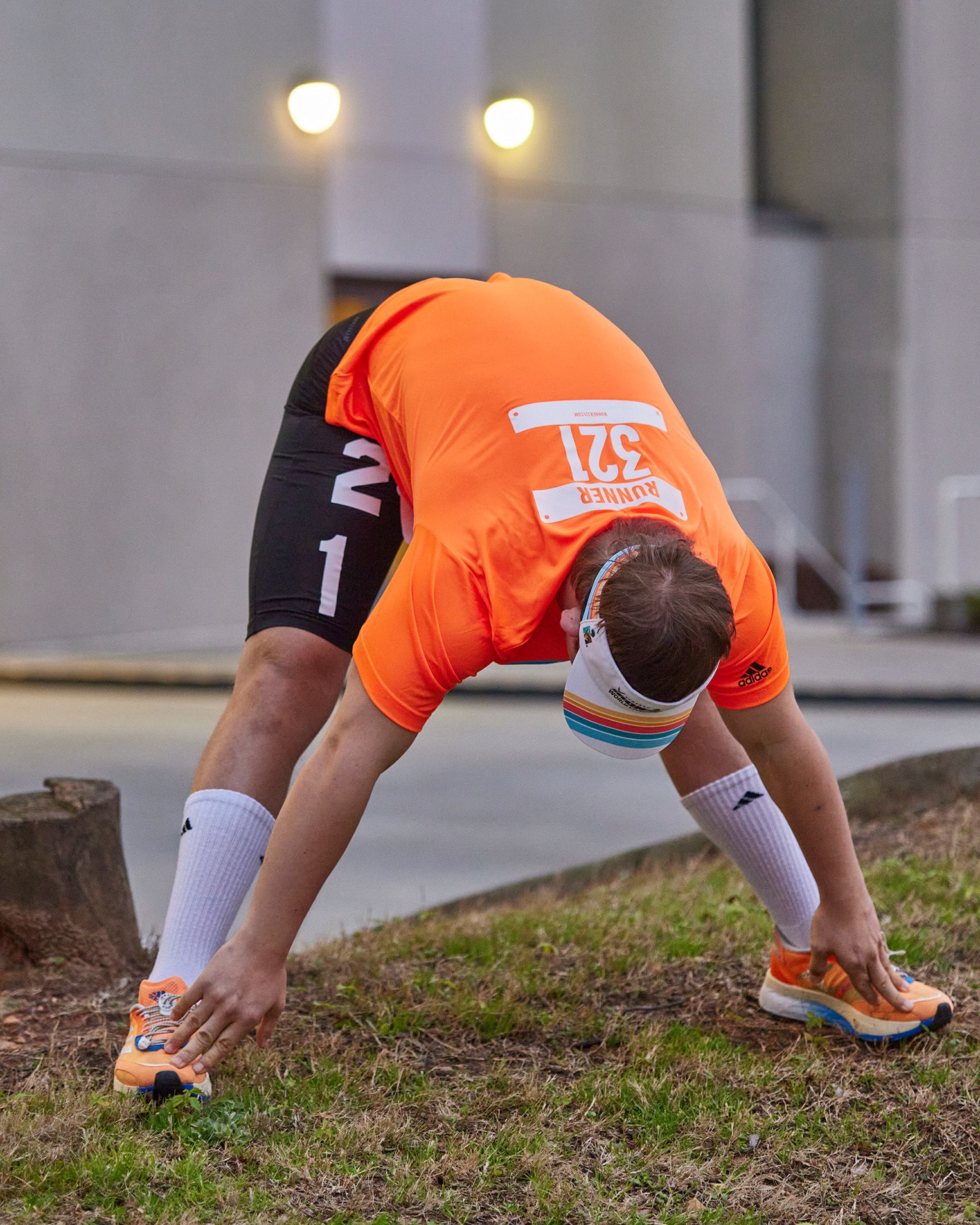
“One percent better isn’t something you do for an event; it’s a lifestyle,” Nik says. “It’s ingrained in everything. He studies that way. He exercises that way.”
In Chris’ room hangs a large whiteboard showcasing a daily log of his exercises, detailing how far he’s come with a roadmap of where he wants to go. Near the bottom, Chris lists his goals.
1. Buy my own car
2. Buy my own house
3. Get a smoking hot blonde wife from Minnesota
4. Have my own money to take care of my family
5. Be a famous public speaker
6. Be a successful businessman
And next to those, he writes his plans to achieve them.
1. 1% better. Get one percent better each day. Eat more rice and work hard
2. Work hard
Chris kept adding miles to his runs. He went from swimming laps in a pool to swimming hundreds of meters at nearby Lucky’s Lake, a popular training spot for area athletes. He graduated from sprint triathlons to half triathlons — adding more than 50 miles on the course from where he began. Events that seemed impossible at the beginning — are you crazy, Nik?—he was now completing and further pushing past the boundaries of what people expected of him.
On Nov. 7, 2020, Chris stepped into the cold water of the Gulf of Mexico embarking on his biggest test yet: a full Ironman.
The 140-mile race is said to be the ultimate endurance challenge that tests even the most elite athletes. First, athletes embark on a 2.4-mile swim. Then, still dripping wet, they must pedal through a 112-mile bike ride. And, lastly, they must complete a 26.2-mile run — a literal marathon — to cross the finish line.
“When you describe an Ironman to an ordinary bystander, their immediate reaction is that’s impossible,” Ironman CEO Andrew Messick says.
Steve Wilson, a five-time Ironman finisher, says that at the starting line of an Ironman “you know it’s going to be the most physically and mentally grueling day of your life.”
Ironman founder John Collins said athletes who complete the debilitating race can “brag for the rest of your life.”
To be recognized as an official finisher, athletes must cross the finish line within 17 hours. For Chris, that meant following a strict schedule that would push him to the cusp of the cutoff with little time to spare. Chris was joined by his guide, Dan Grieb, who helped train him for the past 10 months. The two became so close that Chris calls him “Uncle Dan.”
Dan himself is a five-time Ironman finisher who understands the arduous journey. And like Chris, Dan knows what it’s like being told you’ll never amount to anything: a high school guidance counselor once told him he’d be lucky not to end up in jail as an adult. It left such an impression that today he says he doesn’t put limits on anybody. So, when Nik approached him early in Chris’ training, he asked a simple question.
Could my son be an Ironman?
Absolutely, Dan told him.
The choppy water beat against Chris’ body, sending salty waves splashing into his face that filled his mouth and nose. Hundreds of swimmers battled the waters around them, but Chris swam slowly and methodically, relying on his training as Dan set the pace. If there was pain, he didn’t show it. If he was tired, he didn’t complain. And nearly two hours after first entering the water, Chris emerged on the sandy beach ready for the long bike ride ahead.
The bike is the crux of the competition that would determine if Chris finished. With Down syndrome, Chris isn’t as steady on the bike and needs help pushing off and stopping. He rides sitting tall, so his upper body takes the brunt of the wind, causing him to have to pedal harder to maintain speed, which will make the Ironman ride more challenging with a strong headwind. But if Chris can average 15 mph for the 112-mile ride, he’ll maintain pace to meet the cutoff.
For the first 20 miles, Chris rides steady and confidently at a 17 mph clip. He stops on the side of the road for a break to grab a snack and water and unknowingly steps into a fire ant pile. Dan notices the red ants swarming Chris’ legs, causing dozens of fiery burns with every bite. Dan hoses Chris’ legs with his water bottles and swats away the ants, doing his best to maintain composure so as to not further alarm Chris. Chris would need all his focus on the race. There is still a 92-mile ride to complete. And a full marathon beyond that.
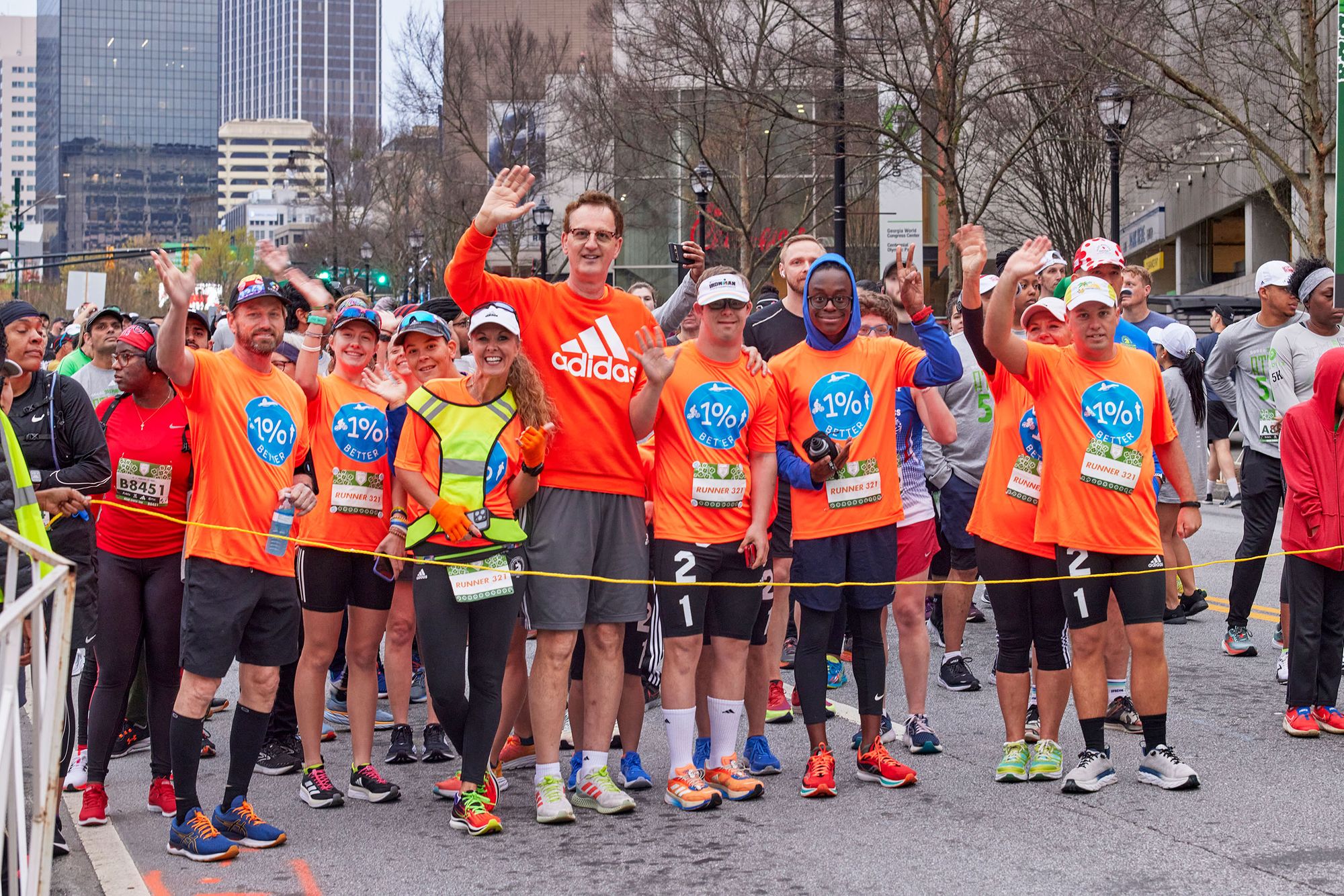
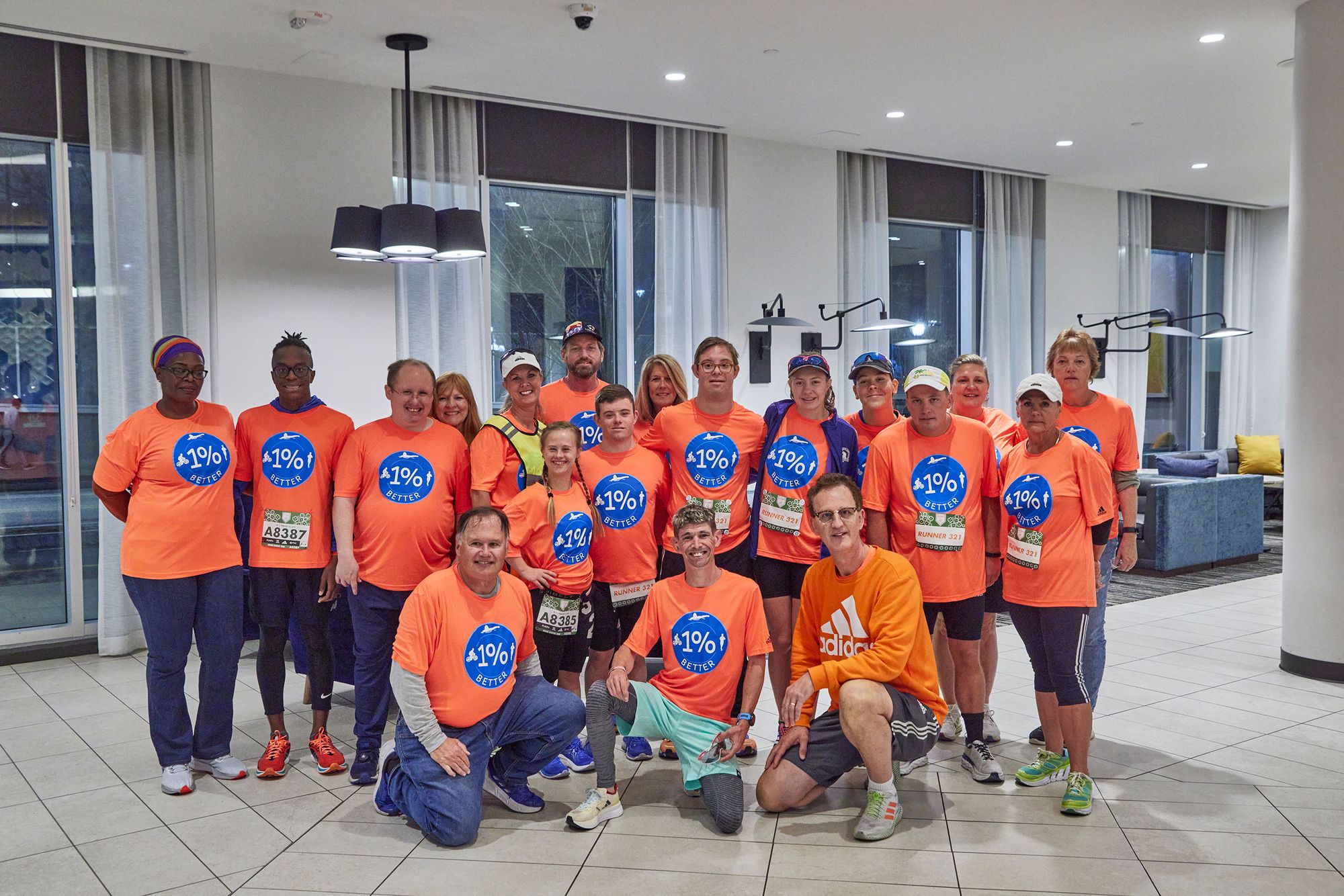
The 321 entourage in Atlanta. [Matt Odom photos]
Chris’ love language is hugging. He has one for nearly every occasion, say, for when he first meets you and he squeezes you so tightly and tells you he loves you. There are his soft and gentle loving hugs reserved for when you tell him you’re proud of him, say, for finishing a 112-mile bike ride as the sun sets over the Gulf of Mexico. And there’s a hug for when he’s hurting and needing reassurance, say, for when he’s at mile 13 of a run and ready to give up on his dreams. Those latter hugs are also soft and gentle and are often accompanied by stroking his hair and whispering sweet words that help him recenter and bring his focus away from the pain.
That’s where Chris finds himself halfway through the marathon when his legs slow to a walk, his thighs are burning, his feet blistered, ant bites stinging, and his mental strength running on reserves as he contemplates quitting.
As Dan pushes Chris to run, Chris screams in pain, “It’s blisters!”
“Okay. That’s okay. Those are fake pain,” Dan says as he pulls Chris’ hand.
“It’s real!” Chris quips.
“It’s okay. Your dreams are right here,” Dan tells him.
Chris asks Dan to disconnect the tether that ties them. Dan balks, knowing there is one thing that will motivate Chris to the finish line: a gentle, loving hug from his dad.
“How’s my boy?” Nik says, pulling Chris into his chest while running his fingers through Chris’ sweaty hair. “Your angels are with you and they’re going to bring you to the finish. You’re going to be okay.”
Nik has an idea, a change in strategy with little time to spare before the 17-hour cutoff, that focuses on Chris’ training. While preparing for the Ironman, Chris counted loops in his neighborhood rather than miles run. Chris can’t quantify 26 miles, but understands that he must run 26 loops. Nik found that when Chris counted backward his fastest times always came at the end. So as darkness fills the streets with three hours until the cutoff, Nik tells Chris he’s finished one lap of the marathon and has one to go. To finish the final lap more quickly, they focus on running 10 orange traffic cones and walking two. With another hug that re-centers him and one loop to go, Chris catches a second wind.
Ten and two…
Ten and two…
Ten and two…
Gone go the miles and here comes the faint music and cheering crowds of the finish line. Chris stops for a final hug with Dan before reaching the red-and-black mats that will lead him to the end. “Let’s go be an Ironman,” Dan tells him. Over the loudspeaker, the announcer bellows: “And here he comes. From Maitland, Florida. He is 21 years old. Let’s welcome him to the finish line…”
Chris raises his arms above his head as he pulls ahead of Dan…the crowd cheering him on… Dan celebrating behind him… as the announcer shouts the words that motivated him through so many morning runs, through the cold-water swims and hot-summer bike rides, and past the pains he ignored to chase his dream…
“Chris Nikic…you…are…an IRONMAN!!!”
Sixteen hours, 46 minutes, and 9 seconds after he began, Chris became not only the first person in history with Down syndrome to ever attempt an Ironman, but the first person in history with Down syndrome to complete one.
He immediately turns to Dan, wrapping him in a big, exhausted, legs-are-burning-feet-are-blistered-arms-are-arching-can’t-think-straight-I’m-so-happy-it’s-over-thank-you-for-everything hug.
Instantly, Chris became a global celebrity. Stories ran in local newspapers, his photo appeared in The New York Times, TV stations from CNN to the BBC played the video of him crossing the finish line, all spotlighting the man with Down syndrome who just accomplished the impossible. Adidas called and signed him as a sponsor. He received public speaking opportunities to discuss his 1% better philosophy. He appeared on talk shows and podcasts. His social media accounts exploded with new followers. Parents of children with Down syndrome flooded his inbox thanking him for being such an inspiration. “He read them all,” Nik says.
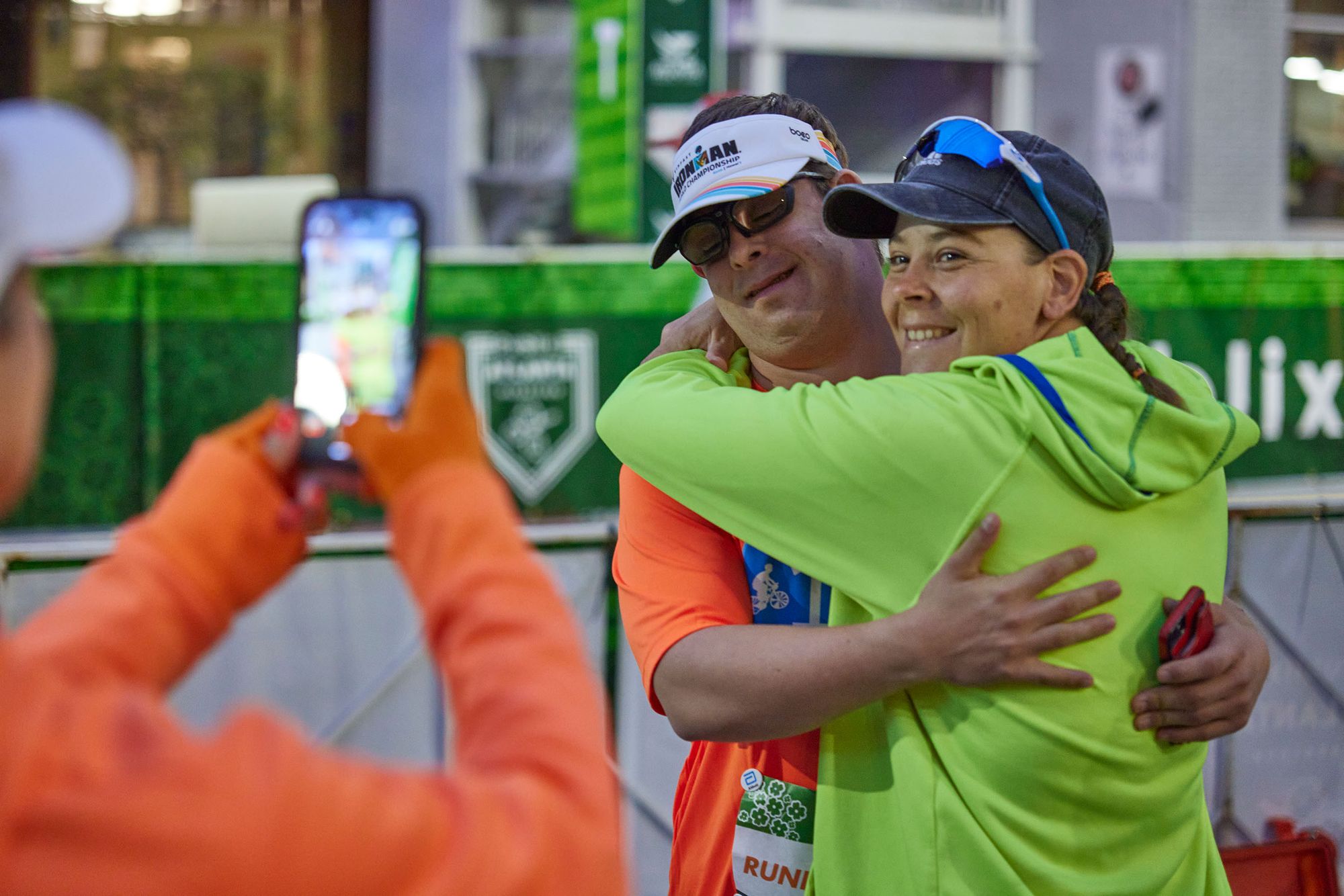
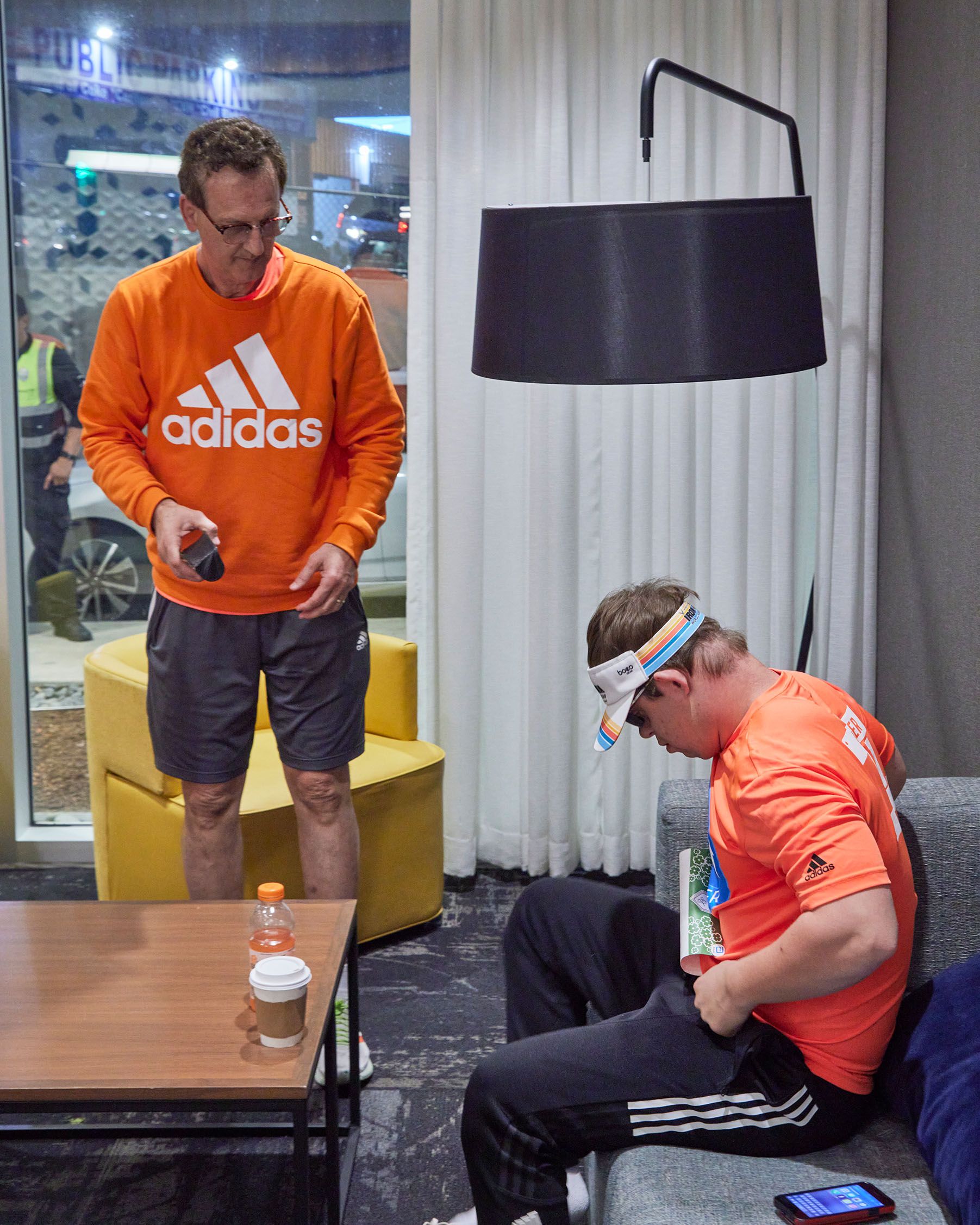
One of Chris Nikic's world-famous hugs. With his dad, Nik, before the race. [Matt Odom photos]
Chris was awarded the Jimmy V Award for Perseverance at the ESPYS, an honor dedicated to an athlete who’s overcome obstacles in sports and still endured at the highest level. He was also named the best athlete with a disability in men’s sports. At the ceremony, standing before the world’s best athletes, Chris’ personality shined as he shimmied on stage, joked behind the microphone, and shared his story to thunderous applause.
“People ask, how did I overcome so many obstacles? Easy. I just got 1% better every day. Three years ago, I was 18, overweight, out of shape, excluded, and isolated. But my dream was to be like you: to be included, to be independent, and to marry an amazing woman like my mom.
“It’s easy to make excuses and quit. I don’t do excuses. I don’t quit. People ask, 'Why don’t you quit?' Because my dream is bigger than my pain.
“Please help me raise awareness for inclusion. And let’s make the world a better place for all of us.”
Nearly two years after completing his first Ironman, Chris once again crossed the finish line in Ironman Kona World Championships, besting his previous time by 15 minutes. He did it on what’s considered the toughest Ironman course with the ferocious waters of the Pacific and the volcanic, mountainous terrain, which is all accompanied by the sweltering heat and humidity.
For Nik and Patty, it feels so long ago that doctors told them their newborn son wouldn’t amount to anything. “Prepare to take care of him the rest of his life,” Nik recalls. It’s a surreal feeling thinking how far Chris has come. He’s learned to tie his shoes. He’s graduated high school. Published a book. Bought a home. Owns a car. He’s dating a “smoking hot blonde” just like his mom. He’s proven family and doctors and therapists wrong. He travels the country speaking to leaders of corporations big and small. He’s a two-time Ironman finisher. A marathoner. A Special Olympics ambassador. A sponsored athlete with his own shoe from Adidas. He’s a member of the Florida Sports Hall of Fame. Been recognized as a Florida Hero by First Lady Casey DeSantis. And he’s only 23 years old.
Through all his successes and fame — everything he once dreamed of as people shunned him—he’s reshaping beliefs of what people with Down syndrome or autism or ADHD and all sorts of neurodivergent conditions are capable of. Growing up, Chris never saw athletes on TV who looked like him. Now, he is an athlete that so many others look up to and say, “I want to be like him.”
With the help of Adidas, Chris is pushing for more inclusion for neurodivergent athletes at races throughout the world. He partnered with the athletic company to create Runner321, a callout for every race, regardless of distance, to reserve bib number 321 for athletes with neurodivergent conditions. The number is a homage to Down syndrome, which occurs when a person is born with a third chromosome 21, also known as trisomy 21.
To promote the cause, Chris has dedicated himself to running all six major global marathons in an effort to get each race to reserve bib number 321. The Boston Marathon was the first to do so after Chris ran last year. He hopes New York and Tokyo will soon, too. Chris is running in the London Marathon at the end of April. Then Berlin and Chicago.
Back in February, Chris and 10 other members of Runner321 ran in the Atlanta half marathon, which became the first non-major marathon to partner with the cause. The group’s bright orange shirts with a blue logo that reads 1% Better stand out among the thousands gathered near the starting line.
Chris stands next to Adrienne Bunn, his girlfriend, who has autism and is growing into an elite runner. There’s Joshua Olds, a 17-year-old with autism who saw Chris’ story and asked his mom, “Could I do that, too?” There’s Jonathan Sady, Chris’ longtime friend with ADHD who loves running because it helps clear his mind. There’s Chad VanScoter, who also has Down syndrome and only planned to run a 5K but, hey, he’s here now so why not attempt his first half marathon with his friends?
As they approach the starting line, Nik leads them, shouting for all to hear…
“Who are you guys?”
“321!” the group yells.
“Who? I can’t hear you.”
“321!”
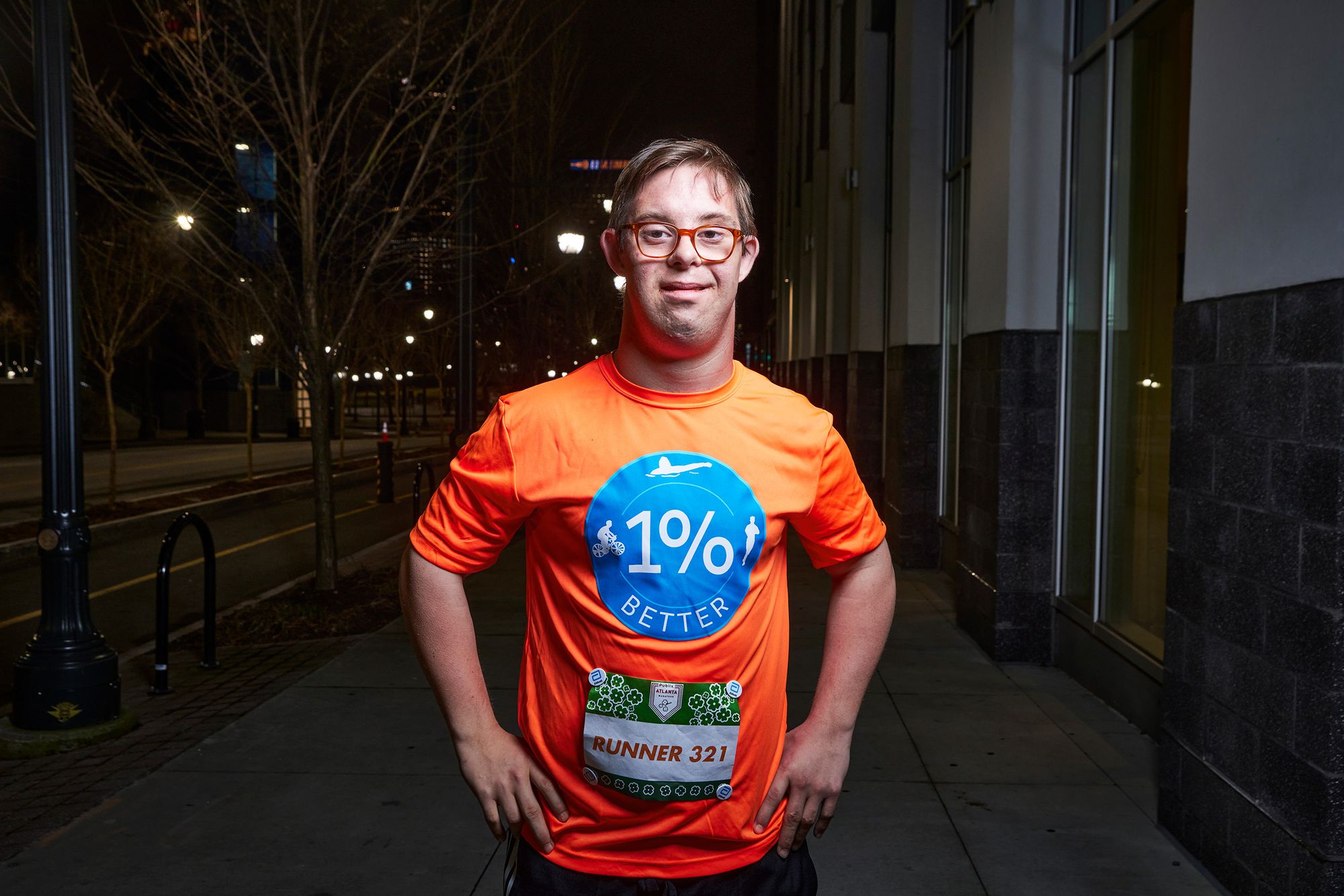
Adrienne will go on to run a personal best time of 1 hour and 48 minutes, in spite of the hills and the cool breeze.
Joshua will finish ninth among runners aged 14-19 by running the race in 1 hour and 31 minutes.
Marlynne Stutzman, who has autism, will complete her first full marathon in 4 hours and 44 minutes.
Chad, who had never logged more than 10 miles in a single run, will complete the half marathon with his dad as his guide. His smile beams so brightly at the finish line that it might as well brighten all of downtown Atlanta.
Chris, meanwhile, stops and takes a selfie and shares one of his trademark I’m-so-happy-to-meet-you bear hugs with anyone who asks.
I’ve followed your story on Instagram, they’ll tell him.
Chris, my brother has Down syndrome. You’re such an inspiration! others will say.
Steve Wilson, the five-time Ironman finisher, stops him after the race and tells him “It’s incredible what you’re accomplishing” before asking for a picture and a hug.
It’s a combination of all these moments for each of these athletes that proves it’s not about the miles run, but rather the relationships forged, the goals achieved along the way. With each finish line crossed, the idea of impossible keeps shifting as they shatter stigmas while proving that people with Down syndrome or autism or any neurodivergent condition can accomplish just as much as you or me.
All they need is a chance.